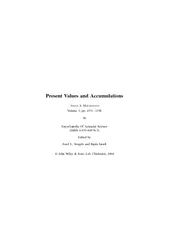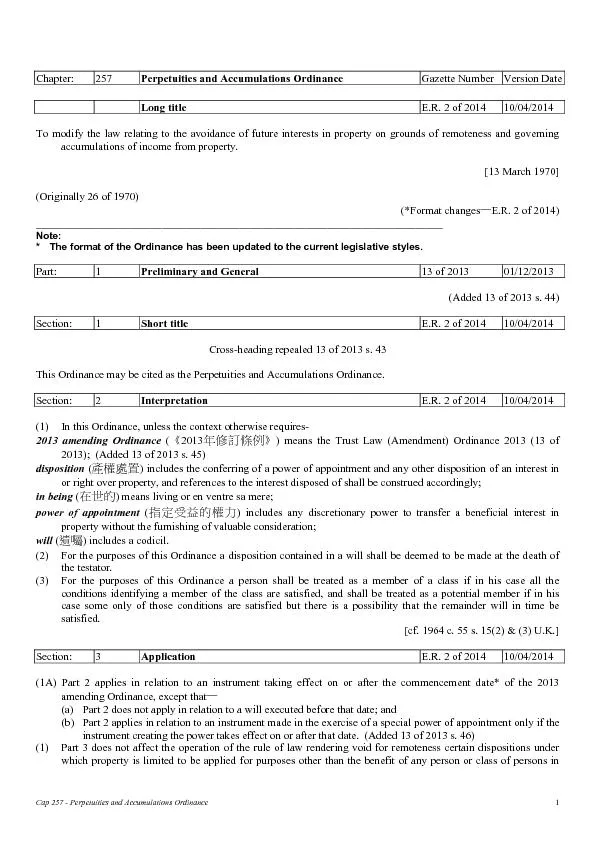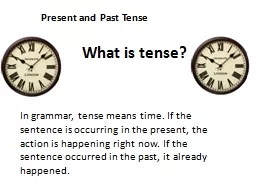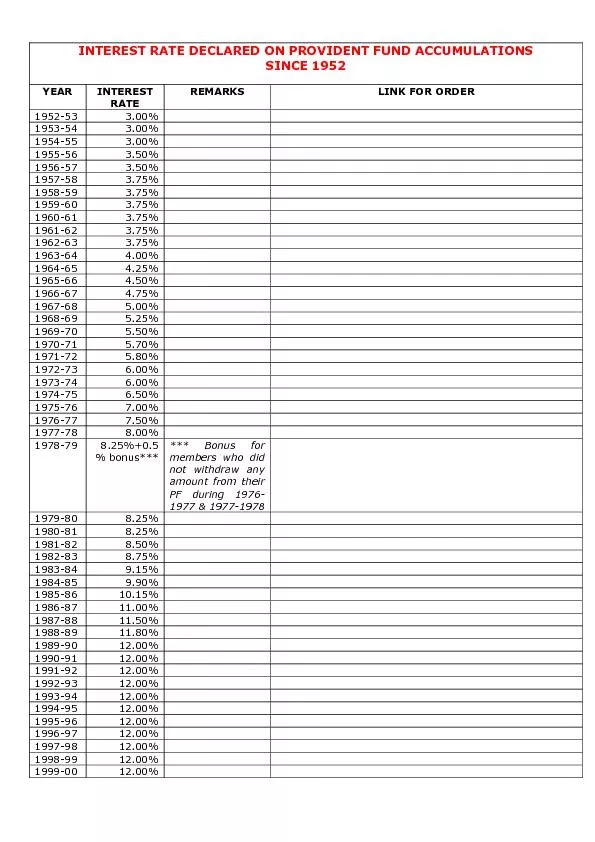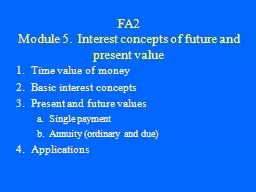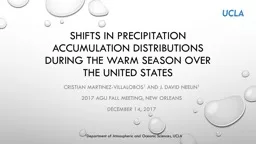PDF-Present Values and Accumulations NGUS S
Author : debby-jeon | Published Date : 2015-04-22
M ACDONALD Volume 3 pp 13311336 In Encyclopedia Of Actuarial Science ISBN 0470846763 Edited by Jozef L Teugels and Bj57592rn Sundt John Wiley Sons Ltd Chichester
Presentation Embed Code
Download Presentation
Download Presentation The PPT/PDF document "Present Values and Accumulations NGUS S" is the property of its rightful owner. Permission is granted to download and print the materials on this website for personal, non-commercial use only, and to display it on your personal computer provided you do not modify the materials and that you retain all copyright notices contained in the materials. By downloading content from our website, you accept the terms of this agreement.
Present Values and Accumulations NGUS S: Transcript
Download Rules Of Document
"Present Values and Accumulations NGUS S"The content belongs to its owner. You may download and print it for personal use, without modification, and keep all copyright notices. By downloading, you agree to these terms.
Related Documents

